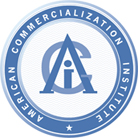 |
High Paying
US Jobs, Economic
Empowerment
&
Revitalization
of
States through Federal Power |
"Critical Field"
Technology Innovation
&
Maximized Profits on
R&D and Investments |
Prevention of Biochemical
and Nuclear Proliferation
&
Homeland Security
Technologies |
Ecologically Safe Water-based
Chlorosulfonated Polyethylene
Ecologically Safe Top quality synthetic rubber with the same
properties as the most expensive primium synthetic rubber causing no pollution
and less expensive then the cheapest currently available rubber.
Based on Aqueous Dispersion of Chlorine -Sulphonated-Polyethylene
Chlorosulfonated polyethylene (CSPE) is a thermoset
material manufactured mainly by Du Pont - Dow Elastomers, S. A., of
Geneva, Switzerland (hereafter DPD). Elastomers (natural and synthetic
rubbers) consumption in the world tops 18 million tons annually. CSPE is a
premium synthetic rubber, relatively expensive and of superior quality.
World CSPE consumption is only a small fraction of the elastomers’
total, presently at about 37,000 tons annually.
The project is based on previous research of the inventor in
the field of statistical modeling of processes of formation of various branched
crosslinked structures. CSPE (Chloro-Sulphonated Polyethylene) is hardened in a
water suspension by Mannich alkalis. The resulting synthetic rubber has all the
advantages of CSPE, but is clean of the organic solution which is poisonous. In
addition, Company proved that low molecular weight PE may also be used, thus
considerably reducing the presently high cost of the raw material, CSPE.
The main import of the innovative process is a very efficient, clean and
environmentally friendly production process of CSPE dispersed in water.
STATE OF PRESENT ART
CSPE is a thermoset material manufactured mainly by Du Pont - Dow Elastomers, S.
A., of Geneva, Switzerland (DPD). CSPE is made by adding chloride and sulfonyl
groups to polyethylene. This modification changes the stiff plastic into a
rubbery polymer which can be crosslinked in a variety of ways. Like PVC and XLPE,
CSPE is a mechanical mixture of ingredients that may contain polymer, fillers,
modifiers and crosslinking agents. The quantity and type of each ingredient
affects the final physical and electrical properties of the insulation.
DPD sells various density CSPE under the commercialname Hypalon®. DPD's only
production facility is in Beaumont, Texas. It produces CSPE at close to its
maximal capacity, which is approximately 35,000 tons per annum. Other producers
such as Tosoh Corporation, Japan, have other names for it. The Tosoh Corporation
produces approximately 2,000 tons annually.
Paint producers, electric cable producers, etc., use the CSPE to create products
for a variety of industries, including automobile, construction, and maritime.
In the case of coatings for the construction industry, for instance, CSPE is
solved in an organic solvent such as toluene and xylene. The solution used is
volatile and toxic because of the solvents, therefore very unfriendly to the
environment and unsafe to use.
MARKET
Elastomers (natural and synthetic rubbers) consumption in the world tops 18
million tons annually. CSPE is a premium synthetic rubber, relatively expensive
and of superior quality. World CSPE consumption is only a small fraction of the
elastomers' total, presently at about 37,000 tons annually. CSPE was always
considered a prime material the spread of which was severely limited by high
cost of production and environmental drawbacks. (refer, for instance, to the
Montreal Protocol)
CSPE sells for ca. US $5 per kilogram. Each one-dollar in CSPE creates a
six-fold street value market. Consequently, the annual sales of CSPE consist of
a value of US $185 millions that translate to a street value market of more than
US $1.1 billion. The market however could be much larger if the price could be
brought down to competitive levels and the environmental drawbacks resolved.
FEASIBILITY PROVEN, PATENT PENDING
Company has produced several sample coatings to prove feasibility. Mechanical
tests performed on samples proved products are as good as their predecessors
solved in organics.
A patent application has been submitted in the US.
APPLICATIONS
For use as anti-corrosion hydro-insulating binder or coating material in the
following industries:
Construction: linings for potable water reservoirs, sheet roofing, adhesives
Aircraft: jacketing and insulation for wire and cable
Naval and Maritime: protective and corrosion resistant applications
Automotive: high-temperature timing belts, power steering pressure hoses,
gaskets, spark plug boots
The mission is to develop, produce and
market ecologically friendly compounds based on chlorine-sulfonated-polyethylene
(CSPE) hardened by aqueous solutions of Mannich alkalis.
The use of Mannich Alakalis (MA) as a CSPE
structure component produces a vulcanized net of saturated polymer. Mannich
alkalis are non-toxic, not volatile and are characterized by excellent
solubility in aqueous and organic solvents.
Various types of CSPE (low and high
molecular weight) and MA vulcanizing agents were investigated, the optimized
results being binders and coatings for various applications.
The development is based on previous
research of the founder in the field of statistical modeling of processes of
formation of various branched cross-linked structures.
